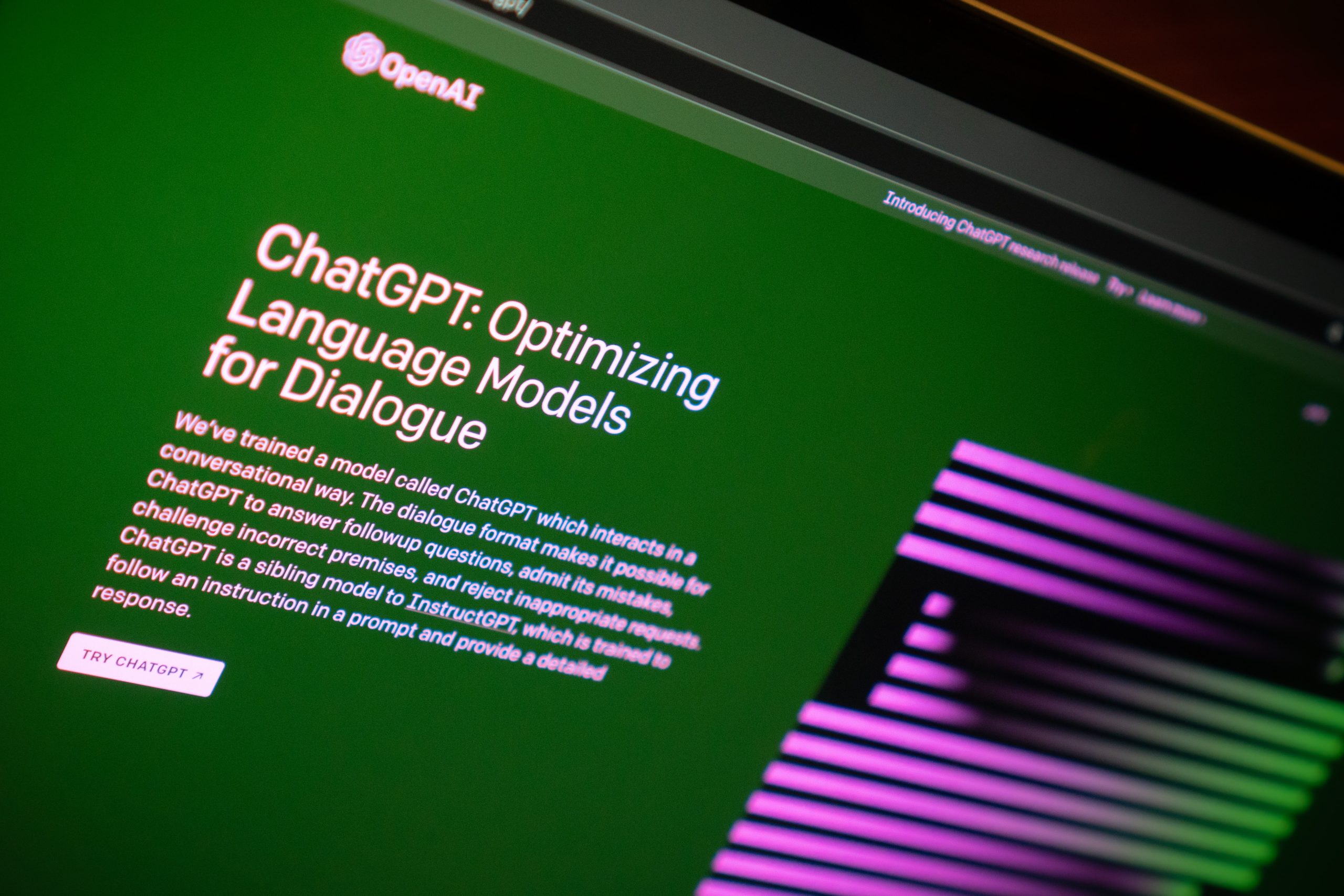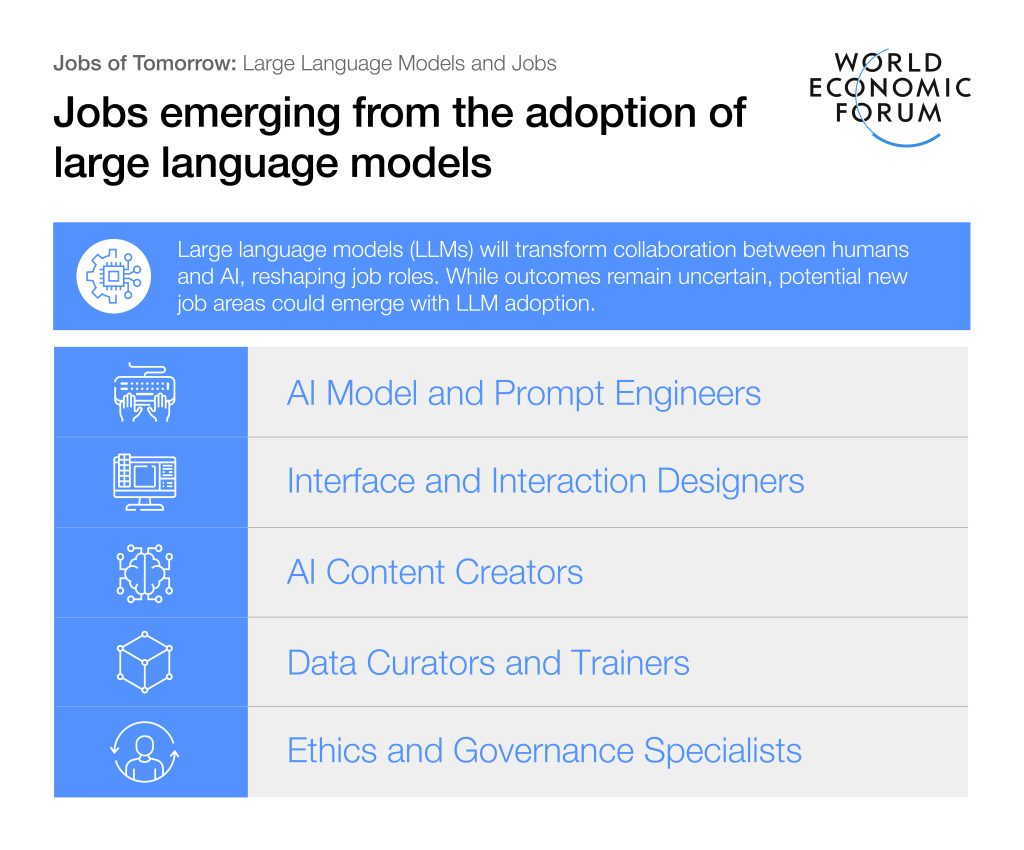
How will AI affect the job market in the near future?
Artificial intelligence is, for all its merits and potential, a disruptive force. Both “regular” and generative AI technologies have an abundance of use cases, in which they often either improve upon, or displace currently existing jobs and processes. I have previously discussed many aspects surrounding AI technology – emerging job profiles, the ethical frameworks around AI development, and potential use cases for generative AI, both in business and among freelancers.
In this article I want to specifically focus on how artificial intelligence might affect the job market in the coming years. Both directly, in industries working with these technologies, as well as indirectly as potential tools for recruiters and jobseekers.
Creative Destruction
A lot of discussions about AI focus on what job sectors are most at risk of being replaced, or which workers are most likely going to become redundant through AI-driven automation. What often falls to the wayside in these discussions, is that AI technology will also help to create new jobs and economic niches.
I found it helpful to think of this through the lens of “creative destruction”. While there is no single origin for the concept, its most closely associated with 20th century political economist Joseph Schumpeter. The idea of “creative destruction” assumes that change is inevitable, and that established economic processes must be destroyed to make room for newer, improved processes. This kind of change and creative destruction are continuously driven by innovation and are hallmarks of capitalist society. One very approachable example of this process is the rise of Netflix and the on-demand streaming industry, which has put most brick-and-mortar video rentals out of business.
You can visualise artificial intelligence as the driver of a similar process: through innovation and the availability of new technologies some jobs will stagnate and perhaps disappear entirely. But it will also allow for the creation of entirely new and exciting job profiles and industries, as well as ways of integrating these technologies into wider society.
Trainers, Explainers and Sustainers
But what does this “creation” mean in the context of AI specifically?
There are many reports trying to pinpoint which industries and job categories are most at risk, or most likely to benefit, from AI augmentation. One such example is this paper from the World Economic Forum, specifically examining the potential impact of large language models (LLM).

The associated summary article identifies three categories of direct beneficiaries when it comes to LLM adoption: trainers, explainers, and sustainers.
“Trainers” are those specialists who work on the development and maintenance of AI technology and systems, such as AI engineers or system administrators. The category of “explainers” covers more user-facing interaction, such as interface or functionality design of these new technologies. The third category are the “sustainers”, who ensure that the technology gets used appropriately – this might cover anyone from ethics and governance specialists to data curators.
Essentially, these categories stand in direct contact with new technology: developing it, rendering it usable and valuable to both trained and untrained users. Quite some of these jobs already exist, but if AI adoption continues at a steady rate, they will likely see a lot of demand in near future.
But if we expect widespread adoption of AI-powered tech, what changes can we expect outside of the AI industry bubble?
Harnessing Artificial Intelligence
I have discussed various use cases for generative AI on this blog before, especially with an eye towards freelancers. There are certainly some clients and employers who strongly oppose the use of generative AI programmes among their employees and freelancers. Maybe this will become a more common stance in the future – or perhaps such sentiments will die off as generative AI becomes more normalised?
On the other side of that are freelancers (and regular employees as well) who use generative AI to optimise or speed up their projects. Especially in recruitment AI might also become a game changer. It might allow recruiters to comb through more profiles, automating tasks such as basic outreach to potential candidates. This is a recurring pattern in many use cases for AI – it would allow for the automation of repetitive or time-consuming tasks, freeing us up to focus on things which require human nuance, creativity, or judgement.
Even jobseekers might begin to harness AI to optimise their search – perhaps to draft out cover letters and more easily identify jobs they are qualified for. Maybe we will see a sort of arms race between recruiters and candidates, each trying to maximise the value of AI to streamline their process?
Sources
AI Will Radically Reshape Job Market, Global Economy, Employee Productivity
Artificial Intelligence Jobs: How Will AI Change The Job Market?
Creative Destruction: Out With the Old, in With the New
How to use generative AI in business | Hibernian Recruitment
Jobs AI will create? Here’s the World Economic Forum view | World Economic Forum
Jobs of Tomorrow: Large Language Models and Jobs | World Economic Forum
What will AI do to the freelancer market? | Hibernian Recruitment
What’s an AI Engineer? Understanding Jobs in AI | Hibernian Recruitment

